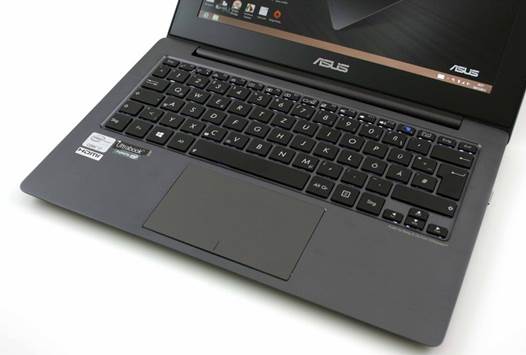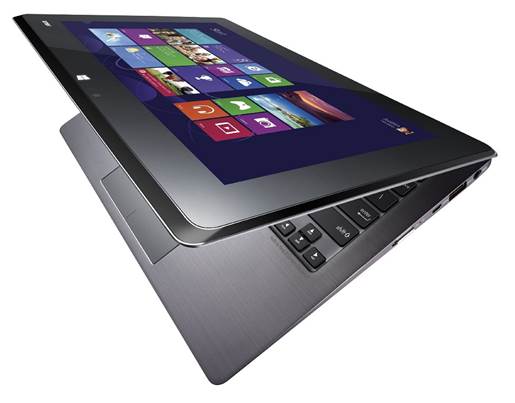The keys on the Taichi more or less have the
same shape as the ones on ASUS's other Ultrabooks, which means they're a bit
wider than height. However, it seems that Asus has some retooling behind the
scenes; typing on this keyboard doesn't feel the same. Apart from the fact that
the layout is more cramped (after all, this is an 11-inch laptop, not 13-inch),
the buttons here feel slightly empty than the ones on UX31A.
To those who’ve never used an Asus laptop
before, they will be just fine: though the keys are a bit flat, they still give
more resilience than what you'll find on most competing ultraportables. We also
feel secure to find that although this is a quite small system, Asus keep most
of the primary keys intact: Enter, Backspace and the right Shift keys are all have
big size, although it needs to admit that the Caps Lock and Tab buttons are
small. Additionally, the buttons have a pleasantly soft surface that turns them
into a comfortable resting spot for the fingers. The backlighting is adjustable,
which we can't say about every laptop we've reviewed.

The
keys on the Taichi more or less have the same shape as the ones on Asus's other
Ultrabooks.
We've admitted we didn't have a great start
with the Taichi's touchpad. Initially, we met with lots of problems with the
cursor stopping in a moment on the screen before it reached where we wanted. As
a matter of fact, we were writing this review in SkyDrive, and a mistaken
touchpad gesture made us out of the website, losing some work in that process.
It wasn't as bad as when we tested the original UX31, and we almost threw it
against a wall, but it was the end.
However, as you may have guessed, we've
made up with it. Mostly, even after re-installing the driver, the cursor can
still be hard to drag, but we can confidently scroll with two fingers, as well
as use pinch-to-zoom to enlarge text. As we've often find with Windows 8
laptops, some of the smoothest gestures are those that are specialized for the
OS. That is to say, it’s especially easy for us to swipe in from the right to swap
through open apps.
Screen, pen input, audio quality
Obviously, using Taichi as a regular laptop
or even a tablet doesn't require any instruction - you can close the lid or
not. You will need to do a little configuring to reflect your desktop on the
outer screen or enter the dual-screen mode. Just press the fourth button from
the right on the Function row of the keyboard - the key with the dual-display
graphic icon on it. That'll launch Taichi Home, a full-screen app that also
shows things like battery capacity and shortcuts to control things like Windows
8 gestures. In any case, just tap that Function button again to rotate through
the different modes.
By default, Taichi enters tablet mode right
after you shut the lid, but you can lock the settings so that that doesn't
happen. Still, there doesn't seem to have a way to lock your mirroring /
dual-display settings. That is to say, if you have set up the machine to reflect
your desktop and then you shut the lid, it'll go back to regular laptop mode
when you re-open the lid, nothing appears on the rear screen. It would be nice
to control that, though we think Asus have made the right thing when designing Taichi
this way: can you imagine the battery will drain if there was a chance the external
screen could be open accidentally?

By
default, Taichi enters tablet mode right after you shut the lid, but you can
lock the settings so that that doesn't happen.
Now, let’s talk about those modes. Of
course, we can see a use for mirroring function. If you're showing a
presentation on your laptop, it'd be nice to show a page in IE10 or play a
slideshow in PowerPoint without having to turn your laptop around so that
others could see in the room. By this way, you get a good view and so does others.
However, the disappointing thing is that dual-display mode only works with
special applications like PowerPoint, which allows you to display Presenter
View on just one screen, for example. We're not sure what else we are expecting
- the ability to drag and drop an app onto the outer screen, somehow? - But now
that we've played with it, we'd say that dual-screen mode isn't as big a big
plus as the mirroring, which has more real uses.